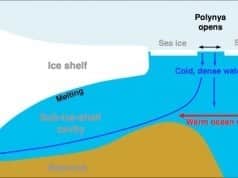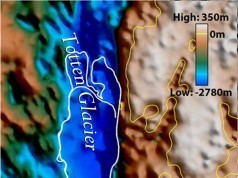Earth Hour was born with a silver spoon in its mouth. Brought into this world by wealthy corporations, one of the reasons it has become “the largest environmental event in history” in less than five years is because of its influential corporate backers.
These include the World Wildlife Fund, Fairfax Media Ltd., Coca-Cola, Ikea, banks, and insurance companies (see here and here).
More evidence that Earth Hour is the product of a multinational corporate machine rather than small-scale, earnest activists may be found by examining how much the World Wildlife Fund pays its CEOs.
Blogger Richard Telofski pointed out last week that Carter Roberts, the CEO of the US branch of the World Wildlife Fund, was paid a total of $455,147 in 2009 – his base salary being $425,000.
By comparison, the President of the United States has a base salary of $400,000 and the US Vice President is paid $230,700.
In other words, the head of the US branch of the WWF earns more money each year than does the US president – and nearly $200,000 more than does the Vice President.
Telofski’s main point is that the CEO of the WWF – along with the CEOs of the Natural Resources Defense Council, the Nature Conservancy, and the Environmental Defense Fund – are in a special category of earners. They all belong to the anointed top 1%. (Anyone earning in excess of $380,354 a year qualifies.)
The people running these green lobby powerhouses are not, therefore, like you and me. They aren’t ordinary folk struggling to make ends meet. They won’t notice much if gasoline prices spike sharply, or if their home heating bill doubles. Such expenses are small change to members of the top 1%.
The CEO of the WWF is wealthy. That wealth insulates him from the real-world consequences of the policies he spends his time promoting.
Gerald Butts, the CEO of the Canadian arm of the WWF, is paid more modestly – but he’s still in the top 1% of Canadian earners. Here’s how we arrive at that conclusion:
WWF Canada’s 2011 Annual Report avoids the topic of CEO compensation altogether (52-page PDF here). Instead, one has to track down a separate document titled WWF-Canada Additional Financial Information.
But even then the WWF refuses to be transparent. The only information it thinks its supporters need to know is that, in 2011, its seven mostly highly-paid employees received compensation that added up to $1,144,000 (backup link).
Canadian rules don’t seem to require charities (this is the tax designation of the WWF) to be clear about how much they pay their it pays its top executive. All we have to go on, therefore is a grid that indicates that one person in WWF-Canada is currently earning between $250,000 – $299,999 a year. Let’s, for argument sake, split the difference and imagine that Butts is being paid $275,000.
The Prime Minister of Canada earns $157,731. Which means the WWF is paying its Canadian CEO almost double what the Prime Minister of the entire country earns.
According to a recent report by the Canadian Center for Policy Alternatives, in 2007 the richest 1% “made more than $169,000″ (see the footnote at the bottom of page 3 of this 22-page PDF).
Ergo, although he earns less than his US counterpart, the $275,000 salary of the CEO of WWF-Canada means he takes home more money than 99% of working Canadians. He’s part of the economic elite.
Earth Hour. The more you learn about it, the less benevolent it seems.





